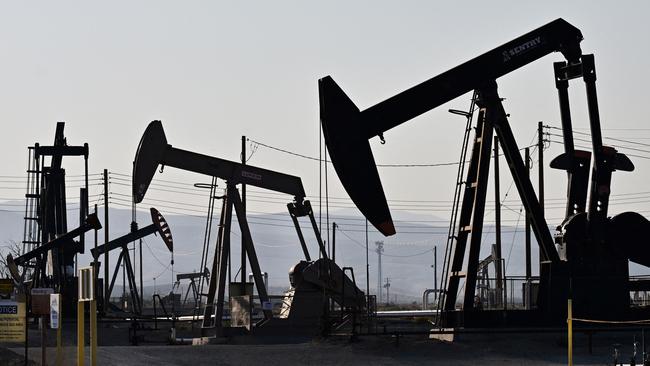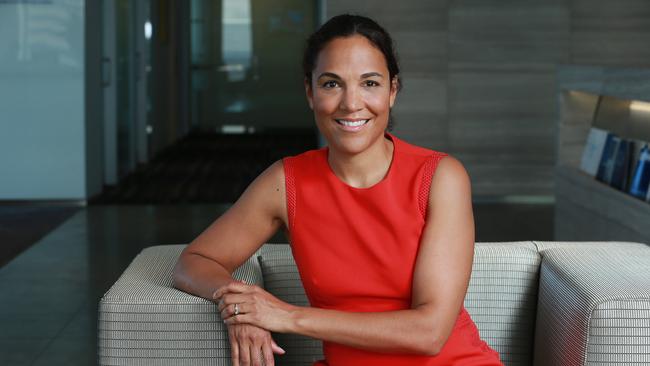The outlook for world’s oil prices clouded by OPEC’s decision to delay its meeting
Analysts say the cartel will ultimately agree to extend its production cuts, but oil prices may be vulnerable after OPEC took the highly unusual step of postponing its ministerial meeting.

The surprising delay of OPEC’s next meeting has added a layer of uncertainty to the outlook for oil prices ahead of an expected slowdown in the global economy after a rapid increase in interest rates.
Analysts believe the cartel will ultimately agree to extend its production cuts, but oil prices may be vulnerable after OPEC took the highly unusual step of postponing its ministerial meeting by four days in order to resolve outstanding production level issues with Nigeria and Angola.
The 23-nation OPEC+ coalition including Saudi Arabia pushed back its meeting until next Thursday.
Brent crude oil futures were down 1.2 per cent at $US81 a barrel in Thursday’s Asia-Pacific trading before Thanksgiving holidays in the US. The global benchmark for crude oil prices dropped as much as 4.8 per cent to $US78.41 a barrel after OPEC’s announcement overnight on Wednesday. It came as a US oil inventories report showed an increase of 8.7 million barrels of oil to 448 million barrels, the most since July, as refining fell to 87 per cent against a seasonal average of 90 per cent.
Saudi Arabia has long been expected to announce an extension of its unilateral 1 million barrel-a-day cutback in a bid to support oil prices amid weakening economic growth next year.
“This is a crucial meeting for deciding production quotas for 2024, but disagreement among members raised uncertainty around deeper supply cuts by the group to support oil prices,” said ANZ’s head of commodities research, Daniel Hynes.
“The market was expecting Saudi Arabia to ask other members for additional cuts to bolster falling prices.”
It comes after some disagreement within OPEC in June. At that meeting, Saudi Arabia pushed Angola, Congo and Nigeria to accept reduced output targets for 2024 to reflect their diminished capabilities after years of underinvestment and operational disruptions.
The countries agreed to the new quota before external audits of their capacity by IHS, Rystad Energy and Wood Mackenzie.

As part of that deal, the UAE was allowed to lift its production in January.
“It is our understanding that both African countries are seeking higher supply quotas for 2024 than the provisional numbers agreed to in June,” said Royal Bank of Canada’s head of global commodity strategy, Helima Croft.
“At that meeting, OPEC squared the books on increasing UAE’s quota, in line with their augmented production capabilities, by reducing the targets for the African nations that were underperforming their required production numbers.
“As a compromise, the lower African targets were subject to review, with the potential to revise higher, pending review by independent sources.
Ms Croft said Nigeria was likely to make an “assertive case” for higher 2024 production numbers amid mounting economic concerns and a new presidency. She noted that Nigeria had been able to increase output by about 300,000 barrels a day since last year, mainly due to the improving security situation in the country and a reduction of attacks on energy infrastructure by armed militias.
“In the end, we think Nigeria can be assuaged as the leadership values its longstanding OPEC membership and improving ties with Saudi Arabia, with the two countries recently inking a series of deals that would see billions of investment flow into the African nation,” she said.
“However, it may be more difficult to bridge the gap with Angola, which has been a moodier member of the producer group since it joined in 2007.”
On more than one occasion, the Angolan delegates have left OPEC meetings mid-negotiation as a sign of their discontent over the direction of the deliberations.
“Hence, we are a bit more uncertain about the longevity of the partnership, but do not see a potential exit as material to the working of the organisation, much as the Indonesian exit did not have a major impact on OPEC operations,” she added.
“We would be far more concerned about the viability of OPEC if the UAE was the source of the pre-meeting friction, given what transpired in June 2021 and their heft as a producer.”
The six-week Israel-Hamas war has brought a strong showing of unity from Gulf Cooperation Council leaders, with forceful calls for a lasting ceasefire and a return to the two-state solution negotiations.
Ms Croft said the GCC would try to maintain “public displays of harmony”, with the COP28 UN climate talks now set to begin in Dubai on the same day as the OPEC meeting.
“Hence, our base case remains that OPEC unity will be preserved and that the current collective and unilateral cuts will be extended,” she said.
“A deeper reduction remains an option, though we believe it would require more groundwork as we do not think Saudi Arabia would want to bear the burden of additional adjustments alone.”
A lack of agreement on production cuts would potentially be quite negative amid weakening economic growth. Brent crude oil futures have fallen about 17 per cent from a late September peak of prices and are down about 16 per cent from a September peak of $US97.69 a barrel.
The crude oil chart shows a bearish “head and shoulders” top pattern which will lead many traders to expect a fall to about $US70 a barrel as long as the price remains below $84.00.
Meanwhile, iron ore futures tumbled as much as 3.4 per cent on Thursday after China’s powerful National Development and Reform Commission said it would increase supervision and crack down on illegal activities.
Companies should not hype up prices or manipulate the market, it said, confirming that it had met with iron ore and futures companies to discuss these issues. The top economic planning body visited the Dalian Commodity Exchange last week to explore strengthening market supervision, Bloomberg said.
Iron ore prices have surged by a third since early August, driven by a series of stimulus pledges by Beijing that led the market to anticipate a jump in construction activity next year.
Chinese leaders are also making their most forceful push yet to end the nation’s property crisis, ramping up pressure on banks to boost funding needed to stabilise the industry.


To join the conversation, please log in. Don't have an account? Register
Join the conversation, you are commenting as Logout